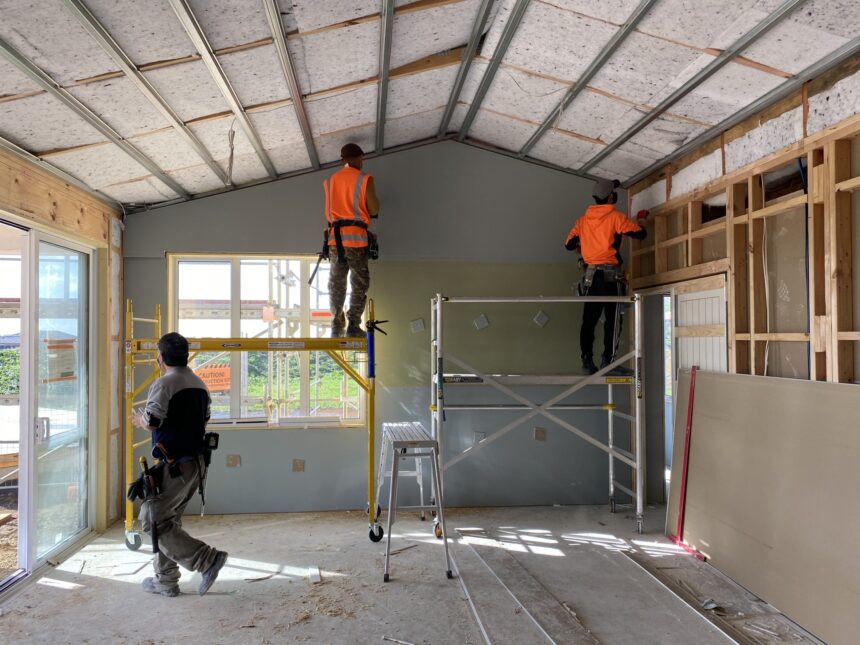When you step into a beautifully finished room, the walls and ceilings are often what create the first impression. Smooth, sturdy surfaces don’t just appear by chance—they’re the result of skilled gib fixing. Whether you’re renovating an old property or starting a new build, understanding gib fixing will help you achieve durable interiors that look professional and last for years.
What is Gib Fixing?
In New Zealand, “gib” is the common name for plasterboard. Gib fixing refers to the process of attaching these plasterboard sheets to the framing of a building—usually timber or steel studs. The goal is to create a flat, stable surface that can later be stopped, sanded, and painted.
Good gib fixing requires precision. Each sheet must be aligned correctly, securely fastened, and installed without gaps. Poorly fixed gib can lead to visible joins, cracking, or even structural weakness down the line.
Why Gib Fixing Matters
1. Strength and Stability
Plasterboard forms the foundation of your walls and ceilings. If it isn’t fixed properly, everything that follows—stopping, sanding, painting—will suffer. Solid gib fixing ensures your walls are strong and built to withstand everyday wear and tear.
2. Smooth, Seamless Appearance
Crooked sheets or uneven joins make it impossible to achieve that flawless finish homeowners expect. Correct gib fixing provides the base for a surface that looks seamless after stopping and painting.
3. Long-Term Durability
Buildings naturally move over time as materials expand and contract. Poorly secured gib is more likely to crack, warp, or cause visible seams. Professional fixing reduces these risks, protecting your investment.
The Gib Fixing Process Step by Step
Professional gib fixers follow a clear process to ensure the best results:
- Preparation – The framing is checked to make sure it’s straight, level, and dry. Any irregularities are corrected before installation begins.
- Measuring and Cutting – Plasterboard sheets are measured and cut precisely to fit walls and ceilings without leaving wide gaps.
- Positioning the Sheets – Boards are carefully placed against the framing, leaving slight gaps at the edges to allow for expansion.
- Fixing with Screws or Nails – Each sheet is secured to the studs with screws (preferred for durability). Fasteners are recessed slightly below the surface so they can be filled later.
- Checking Alignment – Fixers ensure joints are neat and that the surface is flat, ready for stopping and finishing.
Tips for High-Quality Gib Fixing
- Use the right fasteners: Screws provide a stronger, longer-lasting hold than nails.
- Avoid overdriving screws: This can damage the plasterboard and weaken the fixing.
- Stagger the joints: Offsetting joins between sheets reduces the chance of visible cracks later.
- Work with two people: Large plasterboard sheets are heavy; a second pair of hands ensures safer, cleaner fixing.
- Consider professionals: Skilled gib fixers work quickly, avoid costly mistakes, and deliver superior finishes.
DIY vs. Professional Gib Fixing
Many homeowners consider DIY gib fixing to save costs. While small repairs are manageable, installing plasterboard across an entire house is physically demanding and requires a trained eye.
- DIY gib fixing: Works for patching holes or replacing a small sheet. However, mistakes often lead to visible joints, uneven walls, or cracks later on.
- Professional gib fixing: Ensures sheets are correctly measured, cut, and secured. Professionals bring experience, efficiency, and the right tools to deliver strong, perfectly aligned walls and ceilings.
For new builds, renovations, or commercial spaces, hiring an expert gib fixer is usually the smarter long-term investment.
Signs of Poor Gib Fixing
If your plasterboard wasn’t installed properly, you may notice:
- Cracks appearing along joints.
- Bulges or uneven areas in the wall.
- Visible screw or nail pops.
- Gaps at corners or edges.
These issues can often be repaired, but they highlight why quality gib fixing from the start is so important.
Final Thoughts
Gib fixing may not be the most glamorous stage of building or renovation, but it’s one of the most important. It lays the foundation for smooth, durable, and visually appealing walls and ceilings. Done right, it prevents future problems and ensures your interiors look flawless for years to come.
For small DIY repairs, basic gib fixing skills can get the job done. But for full renovations, new homes, or commercial projects, professional gib fixers provide the precision and reliability needed to achieve a truly polished result.
A strong, seamless wall isn’t just about aesthetics—it’s about quality craftsmanship. And that all begins with expert gib fixing.




